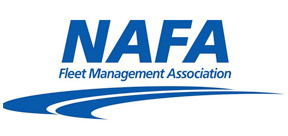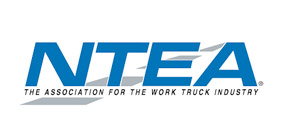Wilmington, N.C., makes heavy investments in its future

The city of Wilmington, N.C., is undertaking multiple ambitious projects to enhance transportation, address flooding and expand community resources. With a focus on improving traffic flow, pedestrian safety and recreational spaces, these developments aim to elevate the quality of life for residents and visitors alike.
Transportation projects
Wilmington is deeply committed to addressing traffic concerns and promoting alternative transportation. Citizens have voiced their desire for better traffic management and a more community-focused trail network, and the city has responded.
According to Dylan Lee, a corporate affairs representative for the city, “Citizens have consistently rated traffic and the need for a more robust citywide trail network as priorities for our community. So, transportation projects are a priority to ensure that Wilmington’s growing community has safe and efficient options for getting around.”
Several key transportation projects have been completed or are underway. They include the filling of sidewalk gaps along Oleander Drive and Wrightsville Avenue, ensuring safer walking routes for pedestrians. Additionally, the city has finished a multiuse path along Park Avenue, part of the regional “River-to-Sea” bike route, making it easier for cyclists to traverse Wilmington.
Exciting projects for 2025 include the installation of seven signalized pedestrian crosswalks, accessibility improvements and new sidewalks along Dawson and Wooster Streets. These enhancements will make heavily traveled corridors safer and more accessible. Also slated for 2025 is the construction of a pedestrian hawk signal for crossing Market Street at 21st Street and improvements to intersections at Pine Grove Drive, Oleander Drive and MacMillan Avenue.
A new multiuse path along Hooker Road and sidewalks and bike lanes on Greenville Avenue and Hinton Avenue are also in the works. These projects will further contribute to a citywide network of sidewalks and trails. As Lee explained, “Linear projects, like multiuse paths, require meticulous planning to address drainage, utility conflicts and easement acquisitions from individual property owners.”
In a major initiative led by the North Carolina Department of Transportation, Wilmington is also a stakeholder in the upcoming replacement of the Cape Fear Memorial Bridge. This project, backed by a $242 million grant from the U.S. Department of Transportation, will help to revitalize the crucial gateway to the city.

Drainage projects
Flooding has been a longstanding issue in Wilmington, particularly due to stormwater runoff from upstream development. To address this, the Clear Run Branch Drainage Improvement Project is the city’s largest stormwater capital improvement initiative to date. The $11 million project is aimed at reducing flooding, improving water quality and enhancing natural habitats and is currently
in Phase I. Phase II is slated to begin in 2025.
Lee noted the importance of this endeavor, stating, “This project is part of a broader effort to invest in stormwater solutions, with over $80 million spent in the past 20 years to alleviate localized flooding in our neighborhoods.”
Parks projects
Wilmington is not only focusing on transportation and flood mitigation but also expanding recreational spaces for its residents. The nCino Sports Park, already a regional hub for soccer and lacrosse, is undergoing a major expansion that set to be completed next month. It will include the addition of 11 full-sized fields, a synthetic turf field, night lighting and a 2,000-square-foot restroom facility.
With the expansion, the park will be able to host even more sporting events, providing a boost to local sports tourism.
The MLK Community Center is also getting a significant upgrade. Scheduled for completion in 2025, the expansion will feature a new gymnasium with a high school regulation-sized basketball court, two motorized goals, four retractable goals, two scoreboards, a motorized divider curtain, volleyball, pickle-ball, wrestling, safety padding for walls and backstops, adequate storage for all intended programming needs, additional restrooms and office space. Additionally, a full commercial kitchen will offer programming opportunities, job training and space for aspiring food service entrepreneurs.
The Market Street Tree Project has reached completion this year as well. Several diseased trees were removed from along Market Street once the trees were identified as being unacceptable due to heart rot. The project was completed earlier this year, and the city has replaced all the diseased trees with healthy living species like wild oaks. Citizens can see this project’s outcome by walking along the Market Street path.
Looking ahead
With these transformative projects, Wilmington is on a path to becoming a safer, more connected, more vibrant city. Whether it’s easing traffic congestion, addressing stormwater concerns or providing world-class recreational spaces, the initiatives reflect the city’s commitment to meeting the needs of its growing population. Lee emphasized, “Wilmington is investing in its future – building infrastructure that will serve our community for years to come.”
Next Article: Top 10 Best places to enjoy turkey day




